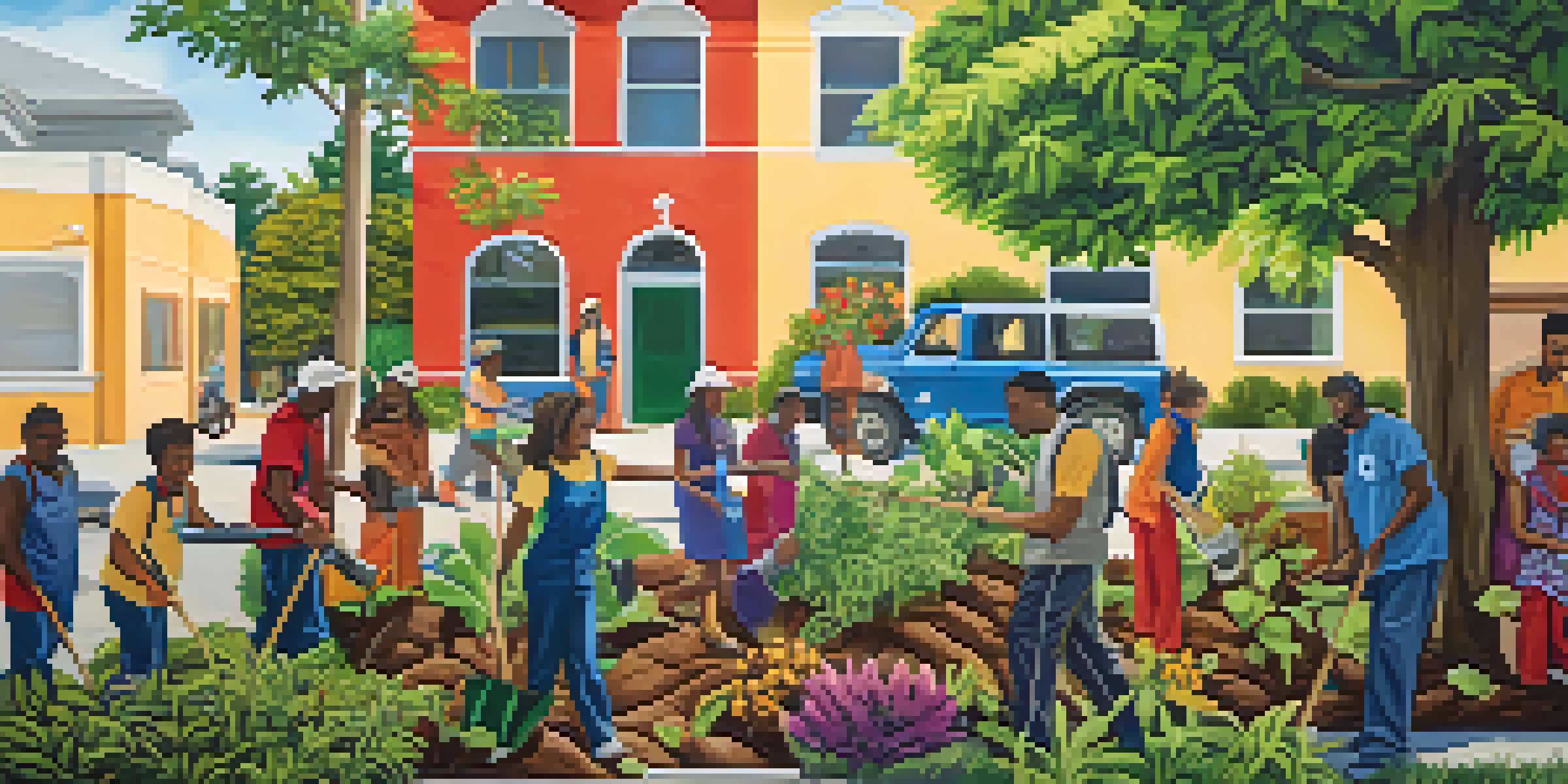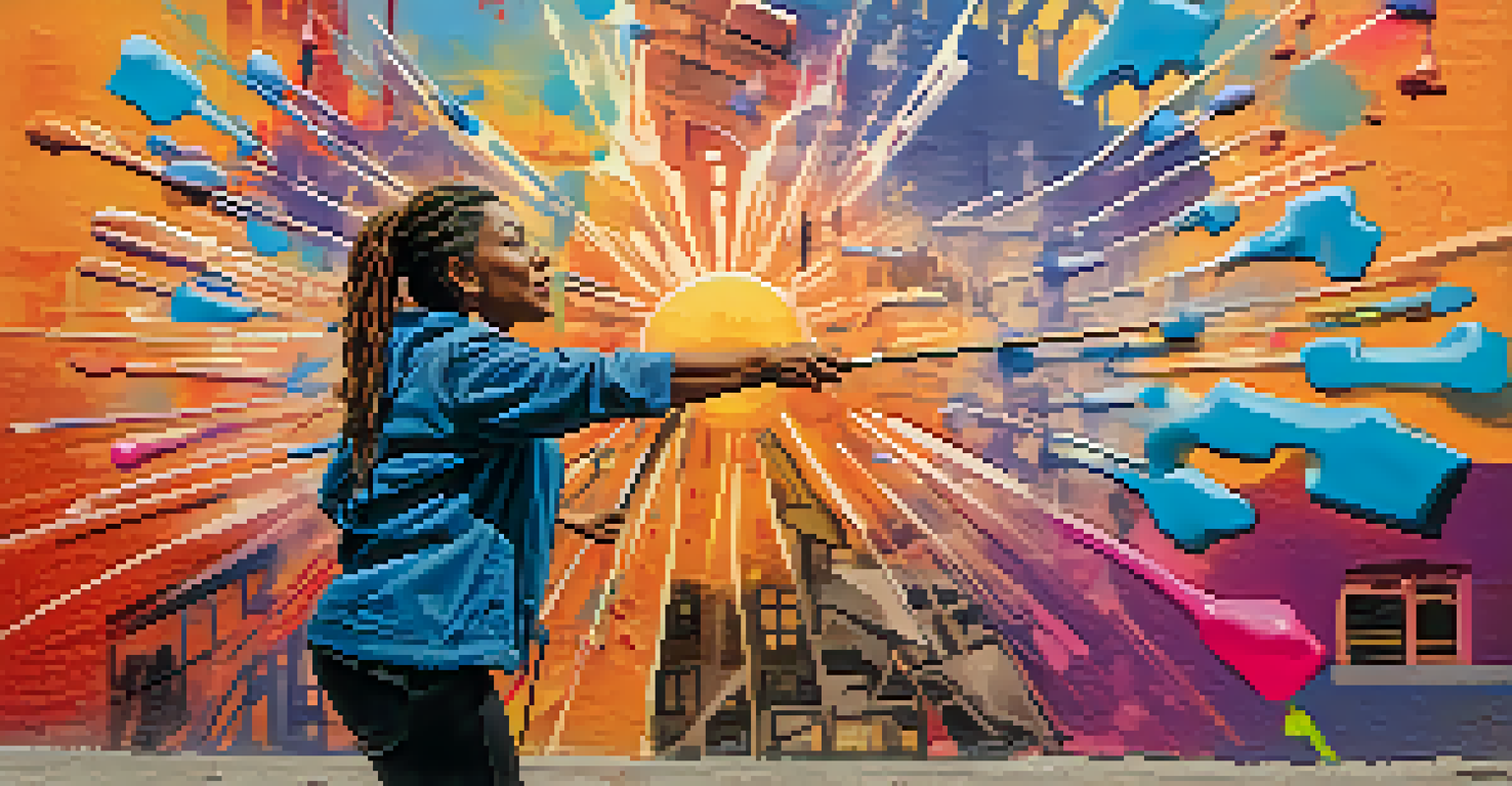The Role of Art in Activism: A Medium for Social Change

Art as a Voice for the Voiceless in Society
Art often serves as a powerful voice for those who feel unheard. Whether it's through visual art, music, or performance, creative expressions can encapsulate the struggles of marginalized communities. For instance, street art often conveys messages that resonate with local issues, making it accessible and relatable.
Art is a lie that makes us realize truth.
When artists share their perspectives on social injustices, they shine a light on problems that may otherwise go unnoticed. This form of storytelling can evoke empathy and inspire action from those who view or experience it. Think of how a moving painting or an impactful song can lead people to consider issues they hadn't thought about before.
Through art, individuals can forge connections and build solidarity among diverse groups. By placing personal stories within a broader cultural context, art can unite people under a common cause, fostering a sense of community and shared purpose.
The Emotional Power of Art in Activism
Art possesses a unique ability to evoke emotions, which can be a catalyst for change. When people feel a deep emotional response to a piece of art, they are more likely to engage with its message. For example, a poignant documentary film about climate change can inspire viewers to take action in their own lives.

This emotional connection can be a driving force behind social movements. When art captures the essence of a struggle—such as a powerful protest song or a haunting photograph—it can motivate individuals to join the cause, turning passive observers into active participants.
Art Amplifies Marginalized Voices
Art serves as a powerful medium for marginalized communities to express their struggles and connect with broader societal issues.
Moreover, art can help heal communities and individuals affected by social issues. By expressing pain and resilience through creative outlets, artists can facilitate conversations that promote understanding and healing, which is essential for any movement seeking lasting change.
Art as a Tool for Education and Awareness
Art can play a pivotal role in educating the public about social issues. Through exhibitions, performances, and installations, artists can inform audiences about topics like climate change, racial inequality, or mental health. This educational aspect is vital, as awareness is often the first step toward action.
The role of the artist is to make the revolution irresistible.
By engaging with art, people can gain insights into experiences that differ from their own. For example, a theater production that explores the lives of refugees can humanize their struggles and encourage empathy among audiences who might not have encountered these stories otherwise.
Additionally, art can simplify complex issues, making them more accessible. Infographics, murals, and even social media art can distill complicated concepts into digestible visuals, helping to communicate critical messages swiftly and effectively.
The Influence of Social Media on Art Activism
In today's digital age, social media has transformed the landscape of art activism. Platforms like Instagram and TikTok allow artists to share their work with a global audience almost instantaneously. This newfound accessibility enables artists to spread awareness about social issues far beyond their local communities.
Moreover, social media can amplify the voices of underrepresented artists, providing them with a platform to share their stories. Hashtags like #ArtForChange or #ActivismArt create spaces for collective movements, allowing people to discover and support causes that resonate with them.
Emotional Art Drives Social Change
The emotional impact of art can inspire individuals to take action, turning passive observers into active participants in social movements.
However, the digital space also presents challenges, such as the risk of art becoming commodified. As art is shared widely online, it’s essential for artists to maintain their authentic message while navigating the pressures of virality and commercial interest.
Historical Examples of Art in Activism
Throughout history, art has played a significant role in social movements. For example, the Harlem Renaissance was not just a cultural revival but also a political statement, showcasing African American identity and struggles. Artists like Langston Hughes and Zora Neale Hurston used their crafts to challenge racial discrimination and celebrate Black culture.
Similarly, the anti-war movement of the 1960s saw music as a rallying cry for peace, with artists like Bob Dylan and Joan Baez influencing public sentiment against the Vietnam War. Their songs became anthems of resistance, illustrating how art can mobilize collective action.
These historical examples remind us that art is not a new tool for activism; it has been a vital part of societal change for centuries. By reflecting on past movements, we can see how art continues to shape contemporary activism in powerful ways.
Collaborative Art Projects and Community Engagement
Collaborative art projects can foster community engagement and promote social change. These initiatives often involve artists working alongside community members to create pieces that reflect shared experiences and aspirations. This process not only empowers individuals but also cultivates a sense of ownership over the art.
For example, community murals can transform public spaces and instill pride among residents. When people contribute to a communal artwork, it can become a symbol of unity and resilience in the face of adversity, reinforcing the idea that everyone has a role in advocating for change.
Social Media Enhances Art Activism
Digital platforms allow artists to reach global audiences, amplifying their messages and fostering collective movements for social change.
Additionally, these collaborative efforts can bridge gaps between diverse groups. By creating art together, individuals from different backgrounds can engage in dialogue, challenge stereotypes, and build understanding—essential elements in any successful activism.
The Future of Art in Activism
As we move forward, the relationship between art and activism will likely evolve. With technological advancements and changing societal landscapes, new mediums will emerge for artists to express themselves and address pressing issues. Virtual reality, for example, could immerse audiences in experiences that highlight social injustices in powerful ways.
Moreover, global challenges such as climate change and inequality will continue to inspire artists to use their platforms for advocacy. As awareness grows, we may see more artists collaborating across borders, uniting their voices to tackle universal issues that affect us all.

Ultimately, the future of art in activism holds immense potential. By harnessing creativity and innovation, artists can continue to inspire change, engage communities, and address the complexities of our world in ways that resonate deeply and authentically.